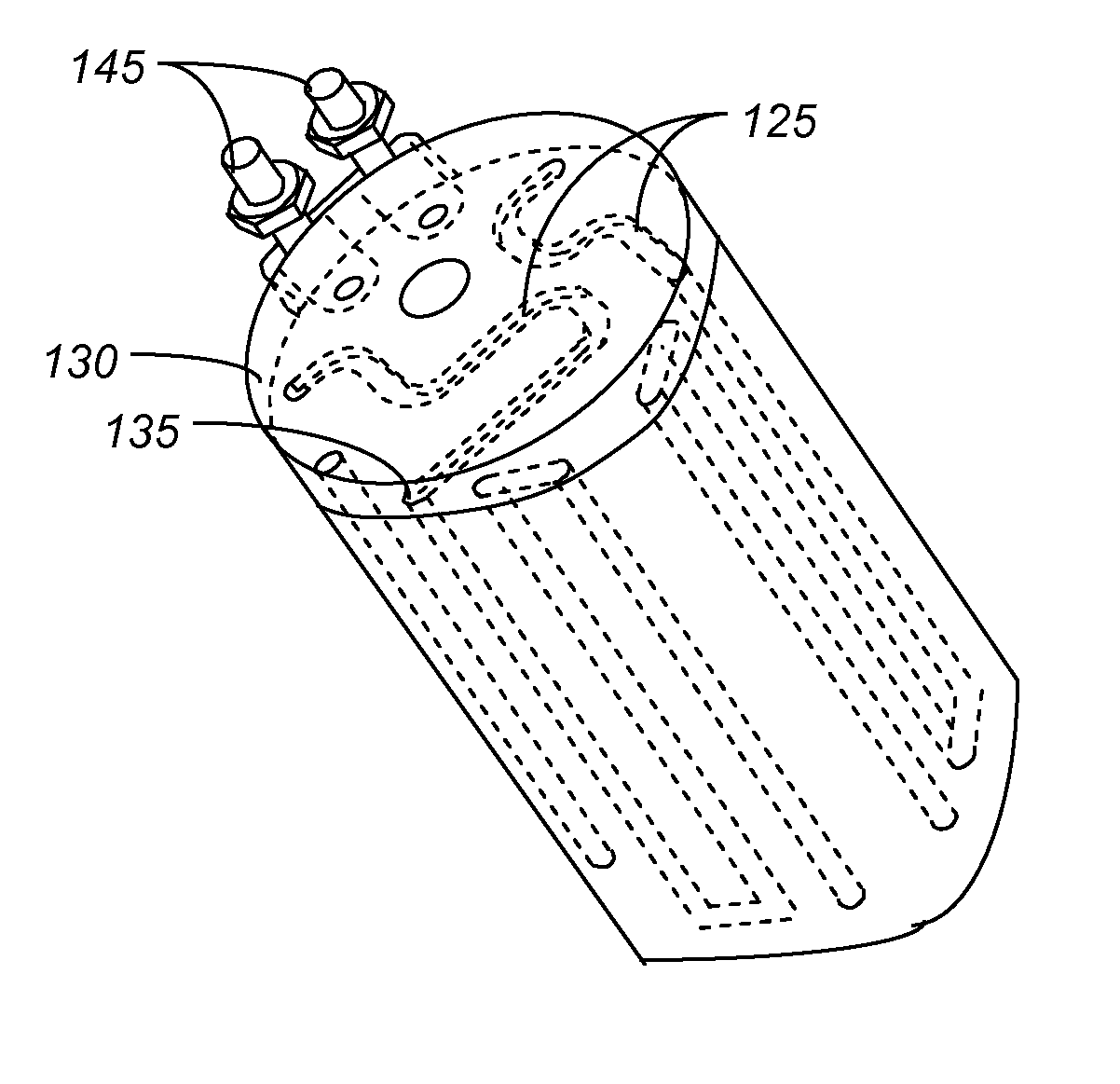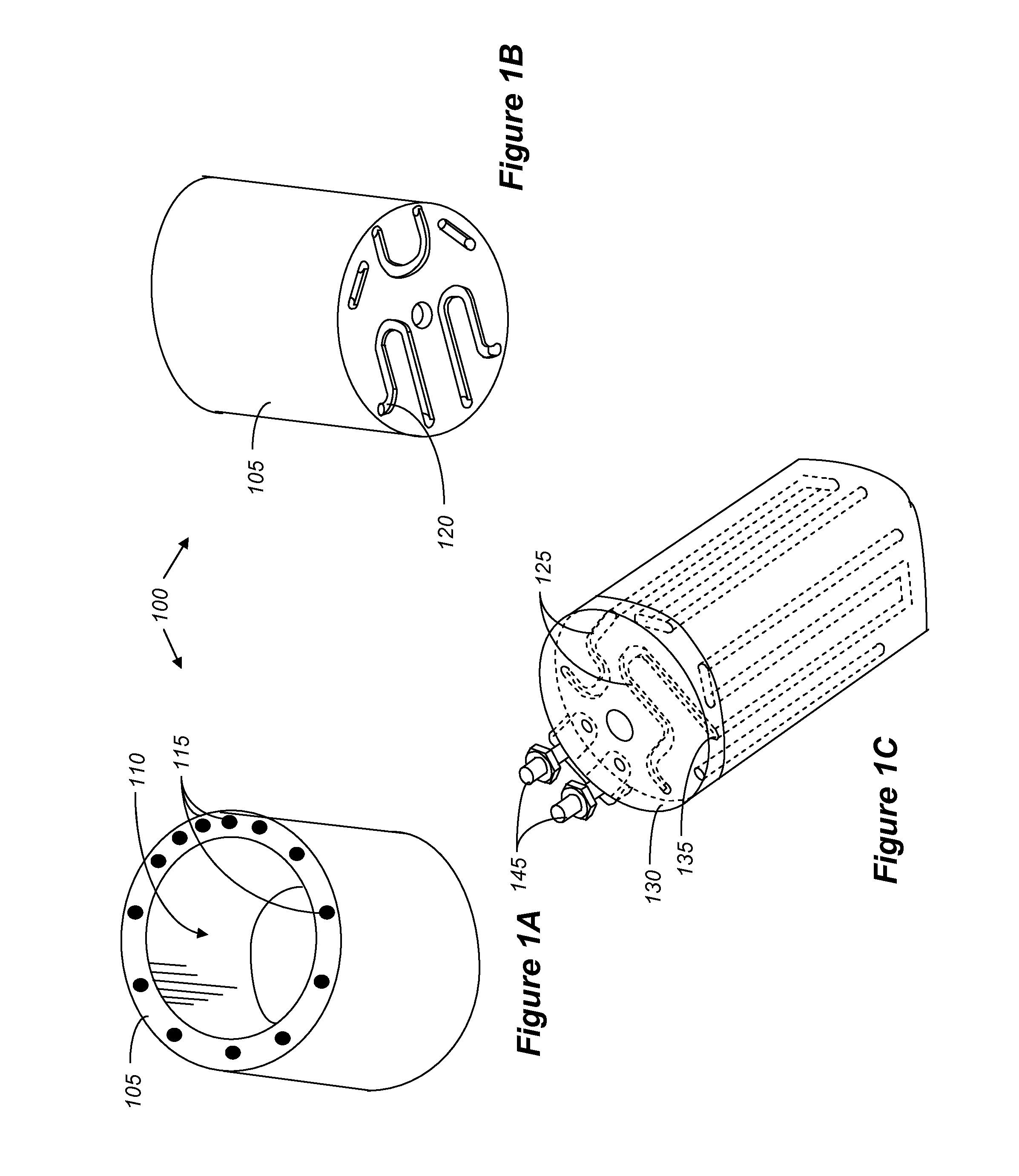Method of and apparatus utilizing carbon cord for evaporation of metals
a technology of carbon cords and evaporation chambers, which is applied in lighting and heating apparatus, furnace heating elements, furnaces, etc., can solve the problems of premature failure, drive the crucible into taxation requirements, and materials with several significant drawbacks, so as to avoid embrittlement, low current power delivery, and low cost
- Summary
- Abstract
- Description
- Claims
- Application Information
AI Technical Summary
Benefits of technology
Problems solved by technology
Method used
Image
Examples
Embodiment Construction
[0011]Graphite cords are well known and are commercially available for various applications. For example, graphite cords reinforced with cotton or glass fibers for packaging and sealing applications are available from Flips India Engineering of Mumbai, India. Graphite cords are also available from Beijing Sanye Carbon Co., Ltd. Of Beijing, China. Such cords are generally woven and therefore are very flexible and can be manufactured to various specifications, especially specified resistivity. By selecting graphite cord of appropriate resistivity, the rods can be used as heating elements which require inexpensive power suppliers and relatively low current delivery, thereby low operating costs. For example, the use of graphite cords for heating elements enables the use of commercially available SCR (Silicon-controlled rectifier) line voltage power suppliers at low currents (e.g., below 20 Amperes).
[0012]Reference is now made to the drawings, wherein FIG. 1A is a top view of an embodime...
PUM
| Property | Measurement | Unit |
|---|---|---|
| temperatures | aaaaa | aaaaa |
| currents | aaaaa | aaaaa |
| temperature | aaaaa | aaaaa |
Abstract
Description
Claims
Application Information
 Login to View More
Login to View More - R&D
- Intellectual Property
- Life Sciences
- Materials
- Tech Scout
- Unparalleled Data Quality
- Higher Quality Content
- 60% Fewer Hallucinations
Browse by: Latest US Patents, China's latest patents, Technical Efficacy Thesaurus, Application Domain, Technology Topic, Popular Technical Reports.
© 2025 PatSnap. All rights reserved.Legal|Privacy policy|Modern Slavery Act Transparency Statement|Sitemap|About US| Contact US: help@patsnap.com


